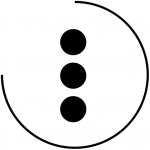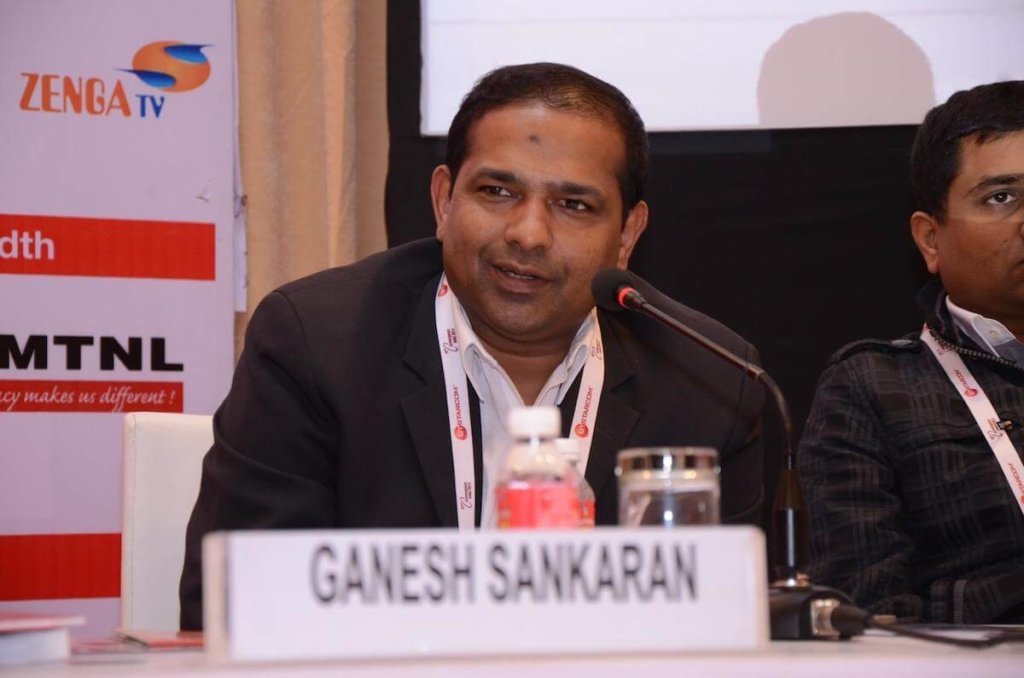The prospect of leaving a safe, comfortable, and well paying job to start your own business would be a scary enough concept for anyone. So what does it take to start a business in an industry that doesn’t really exist yet? To answer that, one would have to ask Ganesh Sankaran, Co-Founder of India’s Prime Focus Technologies.
In 2008, Sankaran joined forces with two like-minded partners and started a media technology company before most of the world knew what YouTube and other digital platforms were. In just over a decade, PFT has grown to become a global leader in media and entertainment industry services with a client list which includes, 20th Century Fox, Disney, Warner Bros., and CBS Television Studios, just to name a few.
Their expertise lies in providing technology solutions that enable the distribution of online content to be faster, easier, and more convenient for those who both produce and consume digital media online.
Recently Tharawat Magazine had a chance to sit down with Ganesh Sankaran to discuss his journey from a software engineer on someone else’s payroll to co-founding a global digital media empire.
Can you by telling us about the beginnings of your entrepreneurial journey?
I started off working in an instrumentation steel plant and then decided to move into software as a software engineer. I was working for this very large $12 billion US entity as their engineering director in India, running at 35-member team there. I was getting paid a lot and I didn’t really have to do anything. But I was bored, I was 37 at the time and I wanted a new challenge so I considered doing an MBA. Then a good friend said go start a company. If you’re successful, you don’t have to do an MBA and if you are not then do the MBA in three years’ time, you will be 40 and you’ll have learned so much that the MBA will be useful. Those were golden words; I keep telling everybody who I meet just how important that advice was. Thankfully we became very successful.
Where did the idea to get into digital media content originate?
It was around 2006 and I was working for a prototype of a device that would later become the iPad. That device looked very strange to me. It did not have an ethernet connection, it didn’t have a keyboard, and I was looking at it as the engineering director and thinking ‘why are we manufacturing this? It looks so stupid.’ Remember at this time we hadn’t even had the iPhone yet. Somebody came to me and explained that the biggest draw is that people can watch YouTube on this device. So that is the day it struck me. ‘OK you can watch YouTube which, in those early days, only had funny cat videos, funny children, but it didn’t have any serious content. So myself and my cofounder were asking ourselves this question – how would television companies put video on this funny device and how will that impact the industry? And then the idea occurred to us, why don’t we go talk to these companies and tell them to give us the content we will make it available via digital media.
What were some of the early milestones that made you believe you would be successful?
We were very lucky, within the first six months we got our first customer and it was a dream customer – the cricket board of India. They had just done the first season of Indian Premier League (IPL) which turned out to be a super successful cricket event. Suddenly the head of the IPL found himself with a lot of content that the world wanted but did not know how to easily distribute. So he called us and said ‘hey guys, you seem to be doing something interesting, can you take my entire content, digitize it, make it searchable for the Internet, and make it available?’ So we got our first customer by September 2008 so we were sitting on a $2 million contract spanning over five years and this was before the software ever got built. This is as crazy as it gets, right?
Can you tell us about your growth and how your company expanded and evolved over the years?
We got funded with $1 million and now we do $65-$70 million. Everything we’ve done has been off that initial $1 million and our own operational growth and a little bit of debt. In total, we’re now a 2000-person team although our core is 250 members of the software team. One thing I’ve always believed is it’s not about your product, it’s about your communication of the value that your product is delivering to the customer. So we were spending a lot of the money to get ourselves in big shows in big places. Because if you want to play a big game, you can’t go out with a $5,000 budget and say I’m gonna be a big disruptor, it’s not going to work. So we did that and in 2010 we were rewarded with the big event in Amsterdam with an award for the best technology in the field of television. Suddenly people were looking at us like ‘Hey what’s going on here’ because that award doesn’t come easily. That enabled us to scale to the next level where 20th Century Fox came to us.
[ms-protect-content id=”4069,4129″]
What’s the most exciting project you’ve worked on with Prime Focus? Is there one where it was exciting and also very challenging?
When we first met with 20th Century Fox (STAR TV Network), we had been just awarded the Best Technology Innovation Company at the International Broadcast Conference (IBC) in Amsterdam. Fox told us that they had pretty much everything covered, and that all they really needed was subtitling work. ‘Would you be interested in subtitling?’ they asked us. We weren’t thrilled about the offer but we wanted to work with this customer so we said we just said yes and went along with it. We met with the head of the London office at 20th Century Fox who explained ‘The problem is in London we can only televise a soap one week after it’s been televised in India. And in that lag time, people between England and India are talking, the mother-in-law’s talking to the daughter-in-law and they’re not able to talk about the same episode.’ The people in London were not watching the subscribed channel, they were watching pirated content on YouTube in order to avoid the lag which was caused by the subtitles having to be produced. So we went back that night and said ‘Is there a way we can get this done faster’? This is where I think this is where our biggest challenge and our biggest success came. We went to the customer and we asked if it would be helpful if we got the content ready in three days instead of one week. They were very excited! We went and looked at the supply-chain of how the subtitling was being processed. Without going into all the details, they were trying to use analogue practices in a digital world. Everything was being done on paper, using excel sheets, the whole thing. We engineered it so it could be done digitally by connecting all the content producers to us, using our Cloud based technology. So long story short we were able to convert what was previously a seven-day process into a seven-hour process. In no time, their subscription went up by multiple fold. We were the first people in India who took a prime time channel to London on what is called day and date. This means the broadcast in London occurs on the same day and the same date as it does in India. Now for me, this is the definition of digital transformation. The true value of digital transformation is not what the software can do, it’s what the software can do for your customer’s business.
Is there a problem that you see in the world that you would love to tackle?
There is now lots of data, lots of content but companies are trying to learn about individuals in such a very unscientific way. For example, just because I watched three Jackie Chan movies, that doesn’t mean my fourth movie needs to be a Jackie Chan movie. It could very well be Sleepless in Seattle or The Notebook. I personally think the science of understanding media customers, what they consume is off-base. I mean five years back, binge watching was not even part of the lexicon. Back then the conventional wisdom was ‘Who would sit there and watch 13 episodes of something over a weekend’? Of course, now we know it turned out to be the next big thing everybody loves to do it. The one problem I’m working very hard on trying to solve is understanding the media customer’s interests in a more purposeful way. With the explosive amount of content that’s there, we are trying to do something very smart in enhancing the customer experience. For me, it’s an art not a science. The art of assisting the person in finding their own answers.
[/ms-protect-content]

